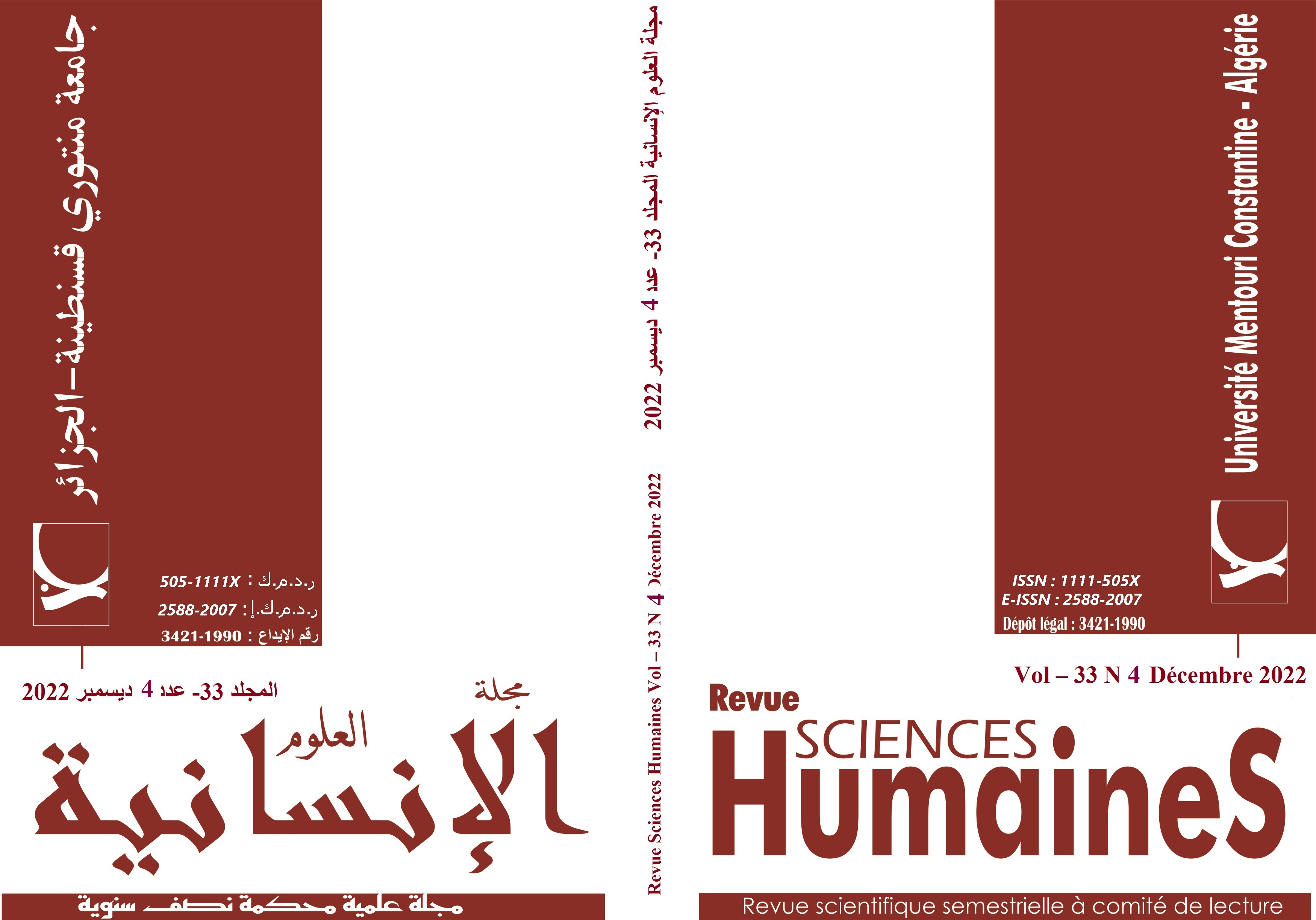Indications of free drawing through adolescent drawings
Keywords:
Free drawing, adolescent, psychological characteristicsAbstract
Most researchers have unanimously agreed that drawing is a behavior that is unique to humans, drawing does not mean that it is accomplished by hand movements alone, but it is the desire to leave traces on the area of the paper, this desire adds to the kinetic action, the symbolic dimension of the drawing, so to draw the child, he must pass from the position of the desire to the position of the action. The mental representation that he creates before drawing is what leads him to implement and realize his drawing, and without it it is impossible to achieve it. The drawings of the adolescent are sometimes also simple and spontaneous, in which the researcher finds an infinite number of facts and connotations that help him to understand the psychology of this adolescent, his characteristics, his conflicts and his needs.
Downloads
References
- عبد الوافي زهير بوسنة، تقنيات الفحص الاكلينيكي، مخبر التطبيقات النفسية والتربوية، جامعة منتوري قسنطينة، دار الهدى للطباعة والنشر - عين مليلة- الجزائر، 2012.
- لويس كامل مليكة، دراسة الشخصية عن طريق الرسم، الكويت، (ب س).
- مالك بدري، سيكولوجية رسوم الأطفال-اختبار رسم الانسان وتطبيقاته على أطفال البلاد العربية ، دار الفرقان، ط2 عمان الأردن، 1997.
- نعيم عطية ، ذكاء الأطفال من خلال الرسوم ، دار الطليعة، ط1 بيروت لبنان، 1982.
- كريمة علاق، محاولة تقنين رسم العائلة باستخدام تقنية رسم العائلة المتخيلة والحقيقية، مذكرة لنيل شهادة دكتوراه غير منشورة، قسم علم النفس و الأرطفونيا وعلوم التربية جامعة وهران، 2012.
- قابلي حنان، الدينامية الابداعية للطفل المصاب بالسرطان دراسة عيادية باستعمال الرسم الحر واختبار تفهم الموضوع، مذكرة ماجستير غير منشورة، قسم علم النفس التربية جامعة مولود معمري تيزي وزو، 2011.
Royer (J) ; Dessin du bonhomme : la personnalité de l’enfant dans tous ses état ; Paris les éditions psychologique; 2011.
Stora (R) ) ; Etude historique sur le dessin comme moyen d’investigation psychologique ; Bulletin de psychologique presses de l’univer de Paris V; 1996.
Tisseron (S); psychanalyse de la bande dessiné; Collection de champs ; Paris, Ed Flammarion; (2000).
Wallon (Ph) , Combier(A), Engelimert (D); le dessin de l’enfant ; 1er Ed ; Paris, Ed PUF, 1990.
Widlocher (D) ; Interprétation des dessins de l’enfants ; 11er Ed; Belgique, Ed Madraga, 1985.
هامش :
- التَّمْثيل أو التَّمثُّل ( (Représentationكما عرفه موسكوفيتشي (, 1976 Moscovici):" هو إعادة إنتاج متجانس وملتحم ومبسط لخصائص موضوع ما، فهو ليس بالضرورة إعادة إنتاج تصور مطابق للموضوع الذي أعيد إنتاجه بقدر ما هو تنظيم جديد للمعلومات المرتبطة بذلك الموضوع. ويتم التَّمثُّل بالاعتماد على الصور فهو عملية تأمل تقع بين المفهوم والإدراك" (...) إن التجربة والتي يتم من خلالها الحصول على المعارف والمعلومات مرتبطة بماضي وحاضر الفرد، ولا شك أن الحاضر يستقي مادته من الماضي ولا يتم هذا إلا عن طريق عملية "الاستحضار" (...)، فالاستحضار الذي يعتمد على الذكريات النفسية يختلف عن الاستحضار الذي يعتمد على الذكريات المعرفية، لأن الأولى عرضة للدفاعات والمقاومات خصوصا إذا انتظمت التَّمثُلات اللاواعية في هوامات وسيناريوهات خيالية تتثبت عليها النزوة، وهذه الحالة هي التي يكون فيها التَّمثُّل "عملية نفسية"، لكن الأمر يختلف في الحالة التي يكون فيها التَّمثُّل "عملية ذهنية".
Downloads
Published
How to Cite
Issue
Section
License
Copyright (c) 2022 Journal of Human Sciences

This work is licensed under a Creative Commons Attribution-NonCommercial 4.0 International License.

















